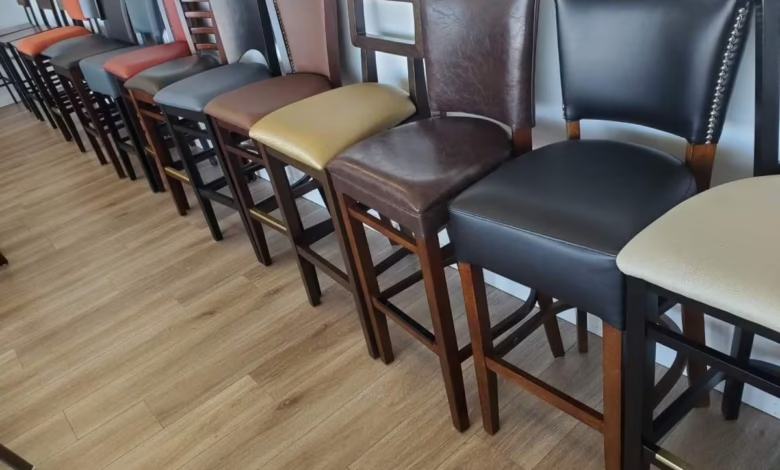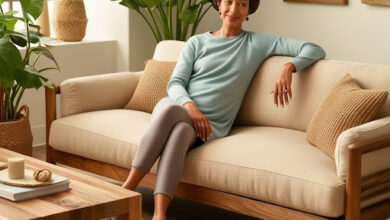CHOOSING THE RIGHT HEIGHT OF RESTAURANT BARSTOOL

Choosing the appropriate bar stools for your restaurant’s furnishings is essential for your patrons’ comfort and practicality. The bar stool’s height is among the most crucial aspects to consider. If the height is chosen correctly, customers may sit comfortably and interact with the area without effort. Knowing how to combine stool heights with table or counter heights is crucial whether you’re furnishing a modern café, a conventional bar or a hip rooftop club. This guide will assist you in selecting the ideal height for the bar stools in your restaurant.
UNDERSTANDING STANDARD HEIGHT
Above all, being aware of the typical heights for countertops and restaurant bar stools will provide you with a good place to start:
Counter-height stools, commonly known as counter-height stools, are stools for countertops 34 to 36 inches high, such as those in kitchens or informal dining areas. The typical seat height of counter-height stools is between 24 and 26 inches.
Bar-Height Stools: Bar stools with seat heights of 28 to 30 inches are the best option for bars or high-top tables between 40 and 42 inches tall.
Extra Tall Stools: These stools are made to fit bars or countertops between forty-four and forty-eight inches high. Their typical seat height is between 33 and 36 inches. High-end establishments frequently use extra-tall stools.
MEASURE YOUR COUNTER
It’s crucial to assess your bar or counter height before choosing bar stools. A tape measure makes this task simple. Remove around 10 to 12 inches from the measurement to get the ideal seat height for comfort.
If your bar height is 42 inches, you should select a stool with a seat height of around 30 inches to provide enough legroom. A stool with a seat height of 26 inches would be ideal for countertops around 36 inches high.
CONSIDER THE TYPE OF SEATING AREA
The choice of height is greatly influenced by the kind of room you are furnishing:
Conventional Bars: If your bar is built traditionally, use bar-height stools. They offer a comfy seating alternative for patrons who plan to sit and mingle for extended periods of time.
Casual Dining Areas: Counter-height stools are perfect for a more relaxed dining atmosphere. Although lower than bar stools, patrons may still enjoy food and beverages comfortably.
Multi-Height Settings: To accommodate a variety of tastes, if your restaurant includes a mix of bar and eating spaces, think about providing both counter-height and bar-height stools.
CUSTOMER COMFORT
Beyond height, consider the comfort of your customers. Your guests will be able to sit for extended periods without experiencing any discomfort or cramping if the stool is the right size. Make sure of the following:
Footrests: A footrest can improve comfort, particularly for customers with higher stools. Customers won’t have to hang their legs this way, and their feet will be supported.
Seat Depth and Width: Seat size may also impact comfort. A bigger seat provides greater room and support, whereas a too tiny stool might make sitting uncomfortable.
Adjustability: Customers may get the ideal fit with several contemporary bar stools with height adjustments. This functionality might be especially helpful in upscale restaurants where patrons want a more customised experience.
CONSIDER THE STYLE AND AESTHETICS
Your space’s visual dynamics are influenced by its height. You want your furniture to blend in with your restaurant’s overall style and ambiance, but functionality should always come first. For instance:
Tall, sleek bar stools are ideal for contemporary or commercial environments where you wish to preserve an open, spacious atmosphere.
Shorter, chunkier stools are ideal for informal or rustic situations when the main objective is to create a warm and welcoming ambiance.
The overall design and the material of the stools (wood, metal, upholstered, etc.) may enhance the eating experience and complement your restaurant’s motif.





